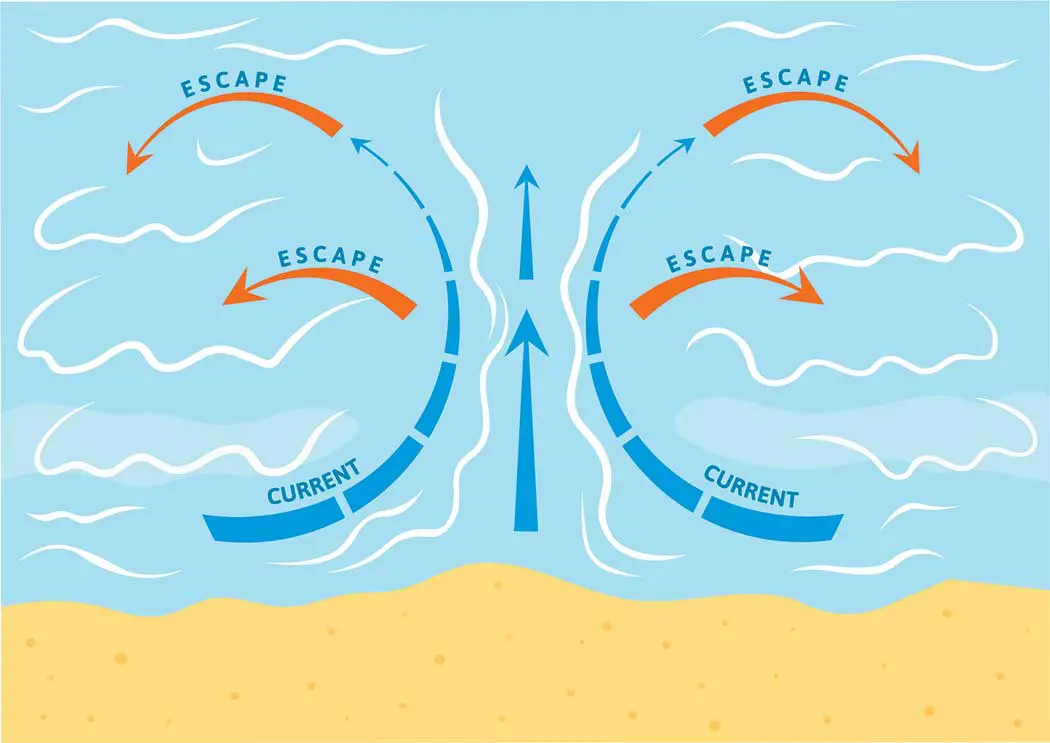Swept Up by the Current-Would you Know What to DO?
By MS. LAUREN SCHATZ, STAFF WRITER
Nothing is better than wading into the cool, refreshing water of the ocean on a hot summer day. The sand squishes between your toes as you move farther and farther away from the shore. Completely surrounded by the water, a sense of peacefulness washes over you with each wave.
While a beach vacation is a great stress reliever, there are elements of the ocean that you cannot control. The ocean, while tranquil in many senses, often has hidden turbulence. This turbulence can come in the form of rip currents. Named appropriately, rip currents are strong, narrow channels of fast-moving water that “rip†the seamless pattern of the water and move strongly away from shore, much like a river. These currents are infamous for pulling people down and farther into the water very quickly.
Beachgoers are often surprised at the strength of this type of current and how little control one has against them. Rip currents have been described as having a chain tied to both ankles and being dragged away from the safety of the shore.
Because of the nature, or flow, of rip currents, swimmers can often escape their pull by cutting across or swimming parallel to the shore. Battling a rip current in any other way (for example, swimming against them), is virtually impossible. The strength of the ocean can overtake even the strongest of swimmers.
Many lives are lost each year in the United States due to rip-current-related-drownings. In 2021, an Airman was caught in a particularly rough riptide and drowned at Surfside Beach near Freeport, TX, about 60 miles south of Houston. Only 22 years old, the Airman was in prime physical condition.
In popular tourist areas such as Hawaii, there is an average of nearly 40 drowning fatalities per year. In such places, beaches are often crowded, giving people a false sense of security. However, the ocean is often too overpowering for others to intervene, and sometimes, there is simply not enough time to help a person caught in a rip current.
Knowing what to look for before entering the ocean is key and can help save lives.
Although rip currents can arise unpredictably, according to weather.gov, the following are clues that a rip current may be present.
- The appearance of a narrow gap of darker, seemingly calmer water between areas of breaking waves and whitewater.
- The appearance of a channel of churning, choppy water near the shore.
- A visible difference in water color near the shore.
- The appearance of a line of foam, seaweed, or debris moving seaward.
When in doubt, do not go out into the ocean, and remember to never swim alone. Swimming in the presence of others can help prevent you from being trapped in a scary, potentially dangerous situation. Remember, if you find yourself caught in a rip current, swim perpendicular to the current rather than against it. Once away from the rip current, you can swim safely to shore. Our great blue oceans offer a lot of fun. A little preparation and a little respect for this powerful environment will help to ensure its fun throughout your visit.

